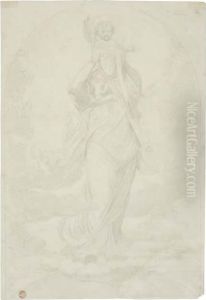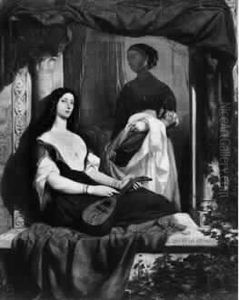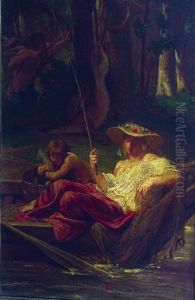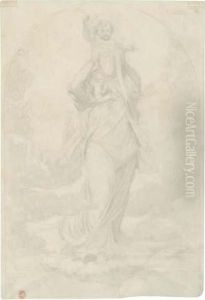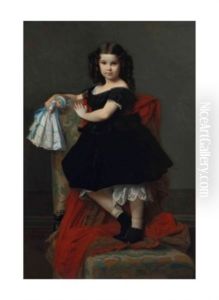Leon Benouville Paintings
Léon Benouville was a French painter born on March 30, 1821, in Paris, France. His work is often associated with the academic and Neoclassical traditions of the 19th century. Benouville's artistic journey was deeply influenced by his studies at the École des Beaux-Arts in Paris, where he trained under influential figures such as François-Édouard Picot. His proficiency and dedication to art were recognized early in his career when he won the prestigious Prix de Rome in 1845 for his painting 'The Wrath of Achilles.' This accolade afforded him the opportunity to study in Rome, an experience that profoundly impacted his artistic style and thematic choices.
During his stay in Italy, Benouville was captivated by the Italian landscape, classical antiquity, and the Renaissance masters, all of which would significantly shape his future works. His paintings from this period are characterized by their meticulous detail, vibrant color palette, and classical themes, often drawing on mythology and history for inspiration. Despite his relatively brief career, Benouville's contributions to French art were notable. His works were exhibited at the Paris Salon, where he gained recognition and accolades for his paintings. Among his notable works are 'The Martyrdom of St. Symphorian' (displayed at the Cathedral of Autun) and 'Esther with Ahaseurus.'
Tragically, Léon Benouville's promising career was cut short when he died on June 28, 1859, at the age of 38. Though his life was brief, his artistic legacy endures, and his works continue to be admired for their beauty, technical skill, and historical significance. Benouville's dedication to classical themes and his mastery of the academic style have earned him a place among the notable French artists of the 19th century, bridging the transition between Neoclassicism and the emerging Romantic movement in European art.

